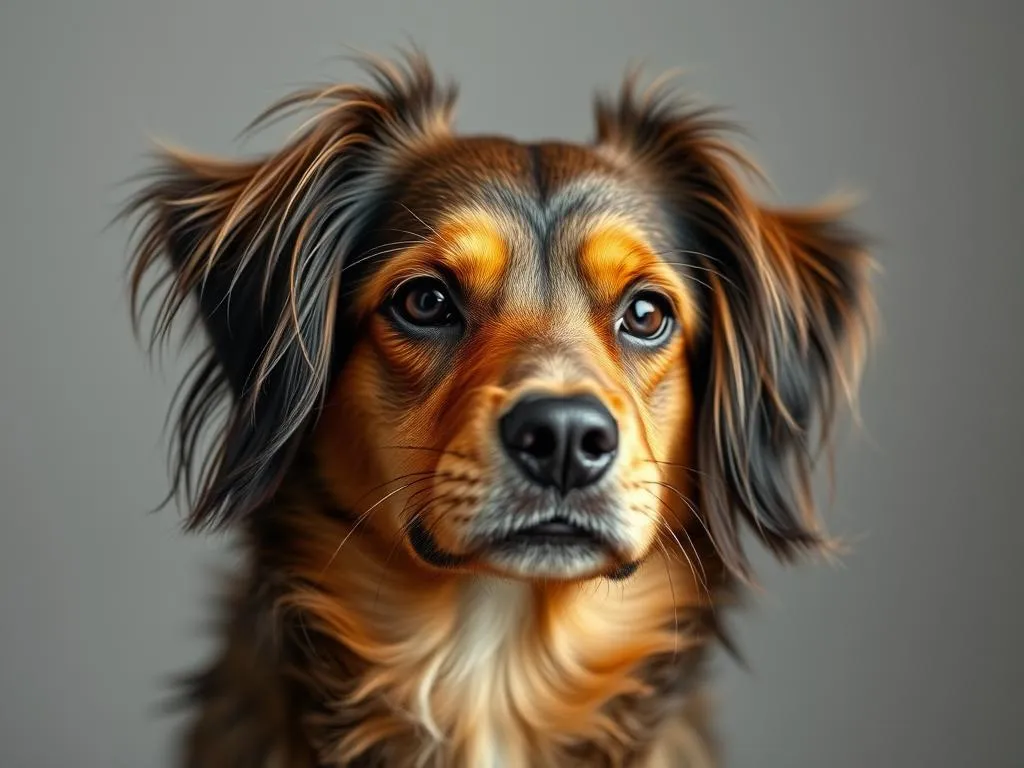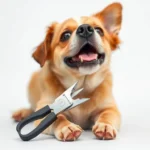
Understanding how long it will take for dog hair to grow back is essential for every dog owner. Hair growth in dogs is not just a cosmetic concern; it plays a crucial role in their overall health and wellbeing. A dog’s coat acts as a protective barrier against environmental factors, helping to regulate their body temperature and protect their skin from injury and parasites.
Understanding Dog Hair Growth
Basics of Canine Hair Growth
The hair growth cycle in dogs consists of three main phases: anagen, catagen, and telogen.
- Anagen is the growth phase where the hair follicles are actively producing hair. This phase can last several months to years, depending on the breed.
- Catagen is a transitional phase, lasting a few weeks, where hair growth slows down and the follicle prepares for shedding.
- Telogen is the resting phase, where the hair will eventually shed and make way for new growth.
Different breeds have varying coat types, with single and double coats affecting how hair grows back. Dogs with double coats, such as Huskies or Golden Retrievers, may experience a more noticeable shedding cycle, while those with single coats may have a more consistent growth pattern.
Factors Affecting Hair Regrowth
Several factors play a role in how long it will take for dog hair to grow back:
- Genetics: Breed-specific growth patterns can significantly influence regrowth times. Some breeds naturally regrow hair faster than others.
- Age: As dogs age, their hair growth may slow down. Puppies tend to regrow hair quickly, while older dogs may take longer.
- Health Status: Illnesses or conditions, such as allergies or infections, can hinder hair growth. A healthy dog is more likely to experience quicker regrowth.
- Nutrition: A balanced diet rich in essential nutrients is crucial for healthy hair growth. Lack of proper nutrition can delay the regrowth process.
- Seasonal Changes: Dogs often shed their coats seasonally, which can affect regrowth times. For instance, many dogs will shed heavily in spring and regrow their coat by summer.
Common Causes of Hair Loss in Dogs
Medical Conditions
Hair loss can be attributed to various medical conditions:
- Allergies: Dogs can suffer from both food allergies and environmental allergies, leading to itching and subsequent hair loss. Identifying and managing these allergies is crucial for regrowth.
- Infections: Bacterial and fungal infections can cause localized hair loss. These infections often require veterinary intervention and treatment.
- Hormonal Imbalances: Conditions like hypothyroidism and Cushing’s disease can disrupt normal hair growth, leading to significant hair loss.
External Factors
External factors can also contribute to hair loss:
- Parasites: Fleas, ticks, and mites can cause irritation and hair loss. Regular parasite control is essential to prevent this.
- Injuries and Surgeries: Trauma can lead to hair loss in the affected area. Surgical sites may take time to heal and regrow hair.
- Stress and Anxiety: Behavioral issues can lead to hair loss, often referred to as psychogenic alopecia. Managing stress is vital for a healthy coat.
How Long Does It Take for Dog Hair to Grow Back?
Average Hair Regrowth Times
The average time it takes for dog hair to grow back varies widely among breeds and situations. Most dogs will begin to see some regrowth within a few weeks, but full regrowth can take several months.
- Small Breeds: Typically, small breeds like Chihuahuas can see hair regrowth within 4 to 6 weeks after hair loss.
- Medium Breeds: Breeds such as Beagles may take approximately 8 to 12 weeks for significant regrowth.
- Large Breeds: Larger breeds like German Shepherds may need 6 months or more for full recovery, especially after significant shedding or medical issues.
Factors Influencing Regrowth Duration
Several factors can influence how quickly a dog’s hair will grow back:
- Severity of Hair Loss: The more severe the hair loss, the longer it may take for the hair to grow back.
- Quality of Care: Providing proper care, including nutrition and grooming, can promote faster regrowth.
- Environmental Factors: Stressful environments or extreme weather conditions can also affect hair growth duration.
Caring for Your Dog During Hair Regrowth
Nutrition and Supplements
A balanced diet is fundamental for optimal hair growth. Consider these dietary recommendations to promote regrowth:
- High-Quality Protein: Essential for hair structure. Incorporate lean meats, fish, or specialized dog food.
- Healthy Fats: Omega fatty acids, often found in fish oil, can improve coat health and contribute to faster regrowth.
- Vitamins and Minerals: Vitamins A, E, and B-vitamins, as well as minerals like zinc, play crucial roles in skin and hair health.
Supplements such as fish oil capsules or specific dog vitamins can also be beneficial in promoting healthy skin and coat.
Grooming Practices
Regular grooming is essential during the regrowth phase. Here’s why:
- Brushing: Regular brushing helps remove dead hair and stimulates the skin, promoting blood circulation and healthier regrowth.
- Grooming Tools: Using the right grooming tools can make a difference. For double-coated breeds, slicker brushes and undercoat rakes can be very effective.
Veterinary Check-ups
Consulting with a veterinarian is vital during the regrowth phase. Regular check-ups can help:
- Identify underlying health issues that may be affecting hair growth.
- Monitor progress and adjust care plans as needed.
- Offer professional grooming advice tailored to your dog’s specific needs.
Stress Management
Creating a calm environment can significantly impact your dog’s recovery. Consider the following techniques to reduce anxiety:
- Routine: Maintain a consistent daily routine to provide security.
- Safe Space: Create a comfortable, quiet area for your dog to retreat to when feeling anxious.
- Positive Reinforcement: Encourage calm behavior through training and rewards.
When to Seek Veterinary Help
Signs of Complications
While regrowth is a normal process, certain signs indicate that veterinary help may be necessary:
- Excessive Itching or Irritation: If your dog is excessively scratching or biting at their skin, it could indicate an underlying issue.
- Signs of Infection or Inflammation: Redness, swelling, or discharge from the skin can signal infection and should be addressed immediately.
- Lack of Improvement: If hair loss persists or worsens over time, it’s essential to consult a veterinarian.
What to Expect at the Vet
When you take your dog to the vet for hair loss, expect the following:
- Diagnostic Tests: The vet may conduct skin scrapings, allergy tests, or blood work to determine the underlying cause.
- Possible Treatments: Treatments may include medications for infections, antihistamines for allergies, or specialized diets to improve overall health.
Conclusion
Understanding how long it will take for dog hair to grow back involves recognizing the intricacies of canine hair growth and the various factors that influence it. From genetics and health to nutrition and grooming, each aspect plays a vital role in the regrowth process. With proper care and attention, most dogs will see their coats return to normal over time, providing both comfort and protection.
Monitoring your dog’s health and taking proactive steps is crucial for their well-being. Don’t hesitate to consult professionals when needed. Remember, a healthy coat reflects a healthy dog, making it essential to prioritize their care.









